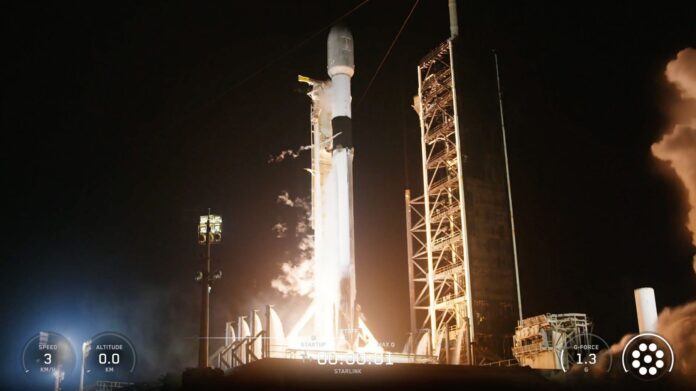SpaceX completed an unprecedented double launch within four hours on Friday night, deploying 58 additional Starlink satellites into low Earth orbit (LEO). The rapid succession of launches from Florida’s Space Coast underscores the company’s accelerating pace in building out its massive satellite internet constellation.
First Launch: Starlink Deployment from Kennedy Space Center
The first Falcon 9 rocket lifted off at 10:08 PM EST (0308 GMT on Saturday, November 15) from historic Pad 39A at NASA’s Kennedy Space Center. Carrying 29 Starlink satellites, the mission proceeded flawlessly. Approximately 8.5 minutes after liftoff, the Falcon 9’s first stage executed a controlled landing on SpaceX’s drone ship, A Shortfall of Gravitas, positioned in the Atlantic Ocean. The upper stage successfully deployed the 29 satellites into LEO about 56 minutes later.
Second Launch: Rapid Follow-Up from Cape Canaveral
Just over three hours later, at 1:44 AM EST (0644 GMT), a second Falcon 9 launched from Cape Canaveral Space Force Station, carrying another batch of 29 Starlink satellites. This mission also achieved a precise first-stage landing, with the booster touching down on the drone ship Just Read the Instructions in the Atlantic. The 29 satellites are expected to reach their operational LEO orbit roughly 65 minutes after launch.
Implications of Accelerated Launch Rate
These launches mark the 145th and 146th Falcon 9 missions of the year for SpaceX. Over 100 of these flights have been dedicated to expanding the Starlink constellation, which is now the largest satellite network ever assembled. Currently, over 8,900 operational Starlink satellites orbit Earth, and the number continues to grow rapidly.
The ability to execute two successful launches within such a short timeframe highlights SpaceX’s operational efficiency and advanced reusable rocket technology. This accelerated pace is critical for maintaining the momentum of the Starlink project, which aims to provide high-speed, low-latency internet access to underserved regions worldwide.
The frequency of launches also raises questions about space sustainability, including orbital congestion and the potential for collisions. However, SpaceX has implemented measures to mitigate these risks, such as automated collision avoidance systems and end-of-life deorbit procedures for its satellites.
The company’s continued success in rapid deployment suggests that satellite constellations will play an increasingly dominant role in global communications infrastructure


































